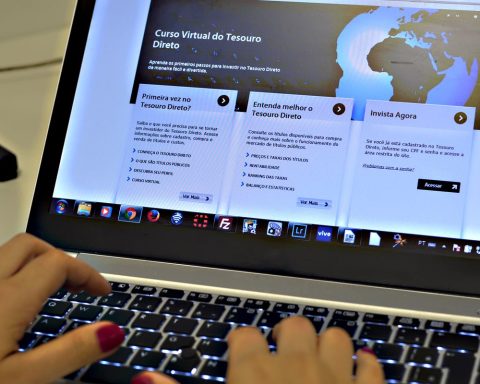The Ministry of Education (minedu) announced that face-to-face classes already have a start date and will start in March, after studying for almost two years under the distance system, due to the COVID-19 pandemic. Facing the return to the classrooms, we tell you in this note which are the private schools with the highest monthly payments and enrollment.
According to the 2022 College Guide of the Education for the Future Group (GEF)75% of private educational institutions plan to charge the same pensions that they had before COVID-19, but 10% plan to increase them.
Given this scenario, the GEF estimates there will be a lower return of students to the classrooms of the private schools.
In his report, he highlights that only 15% of the 250,000 students, who had to migrate to public education between 2020 and 2021, will return to private schools. In other words, only 37,000 students will return.
What are the most expensive pensions and tuition?
The highest price in pensions and tuition is that of the Franklin Delano Roosevelt school (La Molina), followed by Markham College (Miraflores) and Newton College (La Molina), according to the website of each institution.
Next, we show you the 10 most expensive schools in Lima in 2022:
| College | District | Enrollment | monthly pension | Admission fee |
|---|---|---|---|---|
| Franklin Delano Roosevelt | La Molina | From US$1,466 to US$1,661, depending on the level of study | From US$1,466 to US$1,661, depending on the level of study (they pay 9 installments per year) | $18,500 |
| Markham College | Miraflores | From US$1,020 to US$1,224, depending on the level of study | From US$1,020 to US$1,224, depending on the level of study (they pay 9 installments per year) | $17,500 |
| Newton College | La Molina | From US$715 to US$1,052, depending on the level of study | From US$715 to US$1,052, depending on the level of study (they pay 10 installments per year) | $16,000 |
| San Silvestre School | La Molina | From S/ 3,403 to S/ 3,959, depending on the level of study | From S/ 3,403 to S/ 3,959, depending on the level of study (pay 9 installments per year) | $16,500 |
| Peruvian British | Groove | From S/ 2,300 to S/ 3,421, depending on the level of study | From S/ 2,300 to S/ 3,421, depending on the level of study (they pay 9 installments per year) | $16,500 |
| Hiram Bingham | Groove | From S/ 1,750 to S/ 3,035, depending on the level of study | From S/ 1,750 to S/ 3,035, depending on the level of study (pay 9 installments per year) | $15,000 |
| Aleph | Chorrillos | From S/ 1,499 to S/ 2,998, depending on the level of study | From S/ 1,499 to S/ 2,998, depending on the level of study (they pay 10 installments per year) | S/ 35,800 |
| Casuarinas College | Groove | From S/ 1,800 to S/ 2,900, depending on the level of study | From S/ 1,800 to S/ 2,900, depending on the level of study (they pay 10 installments per year) | $10,000 |
| Antonio Raymondi | La Molina | From S/ 1,600 to S/ 2,750, depending on the level of study | From S/ 1,600 to S/ 2,750, depending on the level of study (they pay 10 installments per year) | $8,000 |
| Altaïr | La Molina | From S/ 1,630 to S/ 2,670, depending on the level of study | From S/ 1,630 to S/ 2,670, depending on the level of study (they pay 10 installments per year) | $12,500 |
It should be noted that Minedu, through its platform Identicalalso made available the cost of pensions for study centers in the country.
In addition, in this tool, parents will be able to know if the educational institute is duly registered and has authorization to carry out its activities.
Provisions for the return to face-to-face cases
The Ministry of Education, through Ministerial Resolution No. 048-2022-Minedu, published in an extraordinary edition in the newspaper El Peruano, modified the normative document “Provisions for the return to attendance for the 2022 school year, within the framework of COVID-19″.
The regulations explain the types of provision of the educational service, personal prevention measures in schools, protocol for classes and how to act in the event of suspected or confirmed cases of COVID-19 contagion in educational institutions.
Provision of face-to-face educational service
- Educational service during regular hours from Monday to Friday with the physical presence of the teacher and the students.
- This type of benefit will be given in educational institutions or programs in which students do not exceed the maximum capacity allowed and can attend daily taking care of physical distance (1 m) and the protocols established in this regulatory document.
- Regarding the educational services with residence, such as the Secondary MSE in Alternation, the COAR and the Secondary with Student Residence, in these cases, the pedagogical hours must be adapted according to the MSE (Educational Service Model); and the distance between beds in the bedroom area will be no less than 1.5 m.
Prevention measures in the educational setting
In accordance with the provisions of the Minsa, every member of the educational community must respect the following general measures to ensure their protection and prevention against COVID-19:
- The most effective prevention measure is full vaccination against COVID-19. In this regard, the provisions on the matter issued by the Minsa must be observed.
Identification of people in the risk group against COVID-19
Before starting the educational service with some degree of presence, the educational institution or program must identify the members of the educational community that belong to the risk group against COVID-19.
According to the Minsa, people over 65 years of age or people with conditions or comorbidities, such as:
- Cancer.
- Chronic kidney disease.
- Chronic lung disease: COPD (chronic obstructive pulmonary disease); cystic fibrosis; pulmonary fibrosis; pulmonary hypertension; severe or uncontrolled asthma.
- Heart conditions, such as heart failure, coronary artery disease, or cardiomyopathies.
- Diabetes mellitus, type 1 and type 2.
- Obesity (body mass index [IMC] 30kg/m2 or more).
- Immunocompromised persons (weakened immune system) due to primary immunodeficiencies, long-term use of corticosteroids or other immunosuppressive drugs.
- Solid organ or blood stem cell transplant recipients.
- Cerebrovascular disease (heart attack or cerebral hemorrhage).
- Arterial hypertension.
- Down’s Syndrome.
- Pregnancy.
- HIV infection.
- Others established by the National Health Authority against future evidence
- In the case of students who belong to the risk group, families may request the provision of the distance education service.
Protocol for suspected or confirmed cases of contagion
- The blended or face-to-face educational service must be suspended for the classroom in which the confirmed or suspected case of COVID-19 was found, in accordance with the quarantine period established by the Minsa.
- Likewise, the students and teachers of the classroom in which the case was identified, as well as the people who have been in contact with the suspected or confirmed case of COVID-19, must quarantine for the days established by the Minsa.
- Finally, through the communication channels established by the IE or the educational program, the temporary suspension of the use of the environments must be notified.
Education Service Restart
- Once the days of quarantine, established by the Minsa, are completed, the educational service is restarted. Families must be informed of the date for the resumption of classes through the communication channels established by the IE or the educational program.
- An environment of respect towards the affected persons must be fostered and stigmatizing or discriminatory conduct must be avoided. During the deployment of the measures to be executed in the event of a positive case of COVID-19, the EI or the educational program must guide its actions towards the protection of the socio-emotional health of the affected person, as well as to prevent or combat acts of discrimination.
















